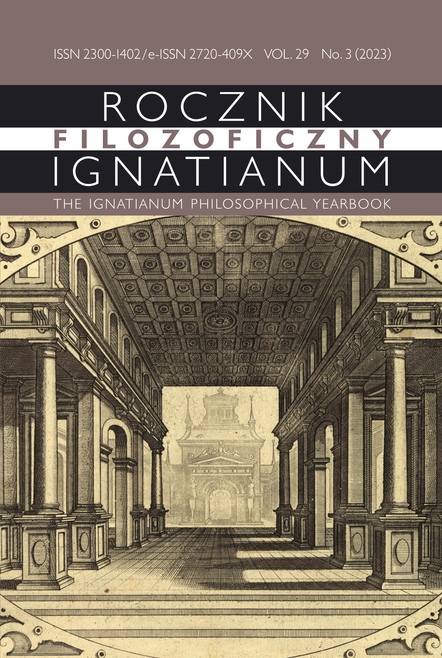Wstęp
Abstrakt
W kolejnym tomie „Rocznika Filozoficznego Ignatianum” kilka pierwszych tekstów poświęconych zostało roli i znaczeniu architektury w kulturze. Od najdawniejszych czasów była ona środkiem wyrażania harmonii, proporcji i ludzkiego intelektu. Zarówno w dobie antyku, jak i w średniowieczu zadaniem architektury było odzwierciedlenie zasad równowagi i symetrii otaczającego świata. W dobie renesansu architektura przestała być klasyfikowana jako dziedzina wyłącznie techniczna i zaczęto ją postrzegać również w kontekście humanistycznym. Zauważono bowiem, że odpowiada ona nie tylko za prawidłową konstrukcję budynków, ale poprzez wykorzystywanie symboli i estetyki wywiera duży wpływ na kulturę i społeczeństwo. Zarówno budowle – świątynie, szkoły, siedziby władzy, jak i zwykłe mieszkania – były projektowane w taki sposób, aby odzwierciedlać potrzeby społeczne danej epoki. Prostota i symetria w formach na przemian rywalizowały z ekstrawagancją, dynamiką, dramatyzmem. Poszukiwanie przyczyn tych zjawisk stanowi główną oś rozważań prezentowanych poniżej tekstów.
Copyright (c) 2023 Akademia Ignatianum w Krakowie

Utwór dostępny jest na licencji Creative Commons Uznanie autorstwa – Bez utworów zależnych 4.0 Międzynarodowe.
Rocznik przyjmuje do druku wyłącznie materiały, które nie wchodzą w żaden konflikt interesów, żaden konflikt z prawem autorskim itp. Redakcja prowadzi działania przeciw: plagiatom, ghostwriting1, guest/honorary authorship2 itp. Autor pracy zbiorowej, który jest pierwszy na liście, bierze na siebie odpowiedzialność i ma obowiązek przedstawić wkład wszystkich współautorów. Jeśli publikacja powstała dzięki dedykowanym środkom finansowym, należy ujawnić to np. w Podziękowaniu, przypisie itp. Ew. przedruki wymagają jawnego zgłoszenia i okazania odpowiedniego pozwolenia wydawniczego. Autorzy / Recenzenci nierzetelni narażają się na reakcję właściwą stosownym instytucjom.
______
1 Ma to miejsce, gdy osoba mająca istotny wkład jest pominięta na liście Autorów czy w Podziękowaniu.
2 Zachodzi, gdy na liście autorskiej pojawia się osoba mająca znikomy/żaden udział w pracy.





